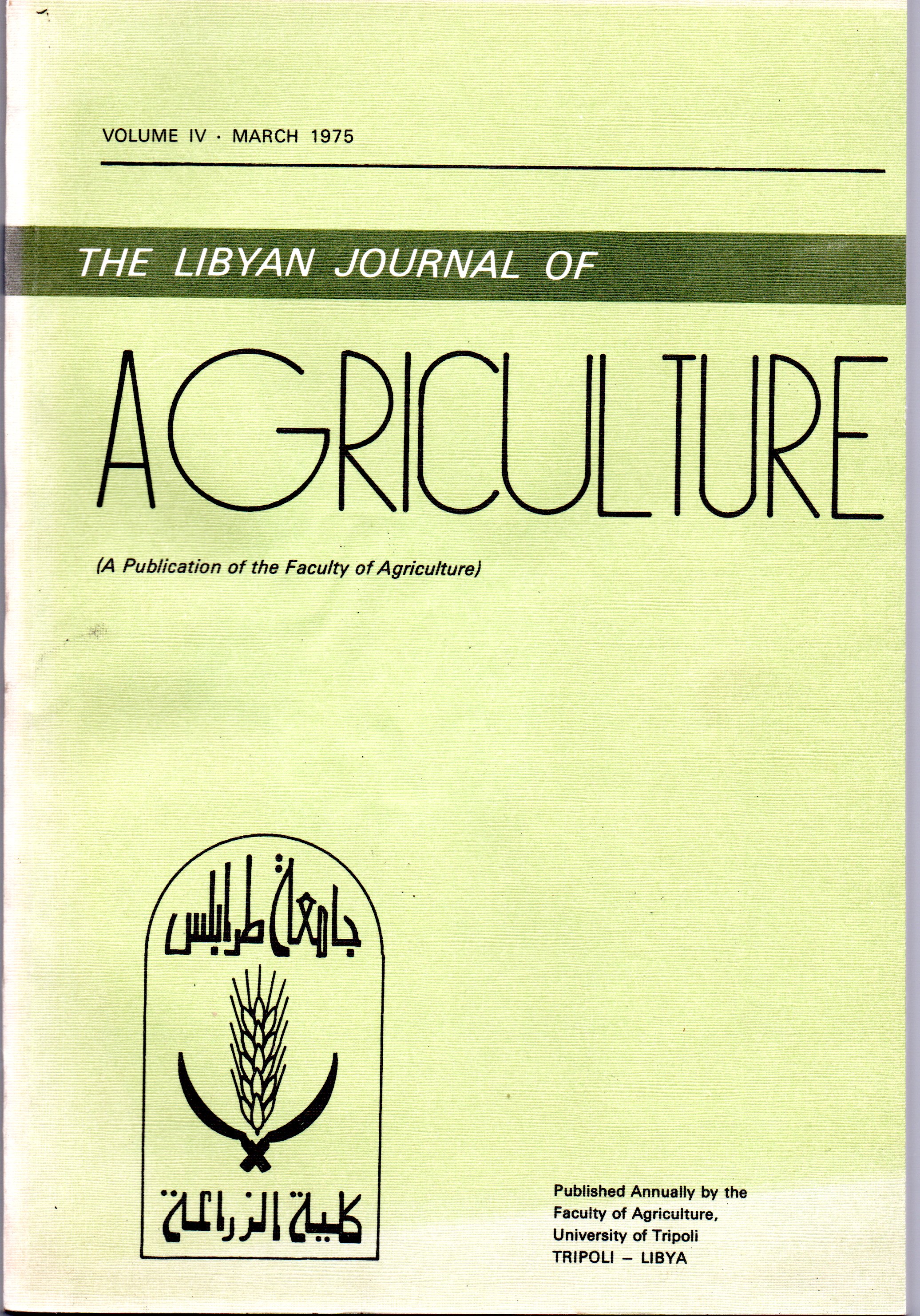Influence of Tillage Methods on Growth and on Yield of Corn (Zea mays L.)
Main Article Content
Abstract
The effect of different tillage practices ranging from minimum (no mechanical cultivation) to maximum (rotary cultivation) on the growth and yield of corn (zea mays L.) was studied on the line sandy soil of Tripoli, Libya. Deep plowing by the 3-disc plow, mouldboard plow and the rotary cultivator retarded the emergence and decreased the number of emerging seedlings. Whereas, the no cultivation and slight harrowing enhanced seedling emergence. There were significant differences in number of emerged seedlings and height of seedlings among the tillage treatments. On the other hand, no significant differences were observed due to tillage in respect to dry-weight of seedling, matured plant height and dry weight of stalks.
There were significant differences in number of ears, length of ears and the yield of ears due to tillage treatments. The highest ear yield of 5.650 kg/plot and the second highest of 4.625 kg/plot were obtained from the 3-disc plowing and the rotary cultivator, respectively. The no mechanical cultivation gave the lowest yield (2.625 kg/plot). Width of ears and kernel size were not significantly affected by the tillage practices.

